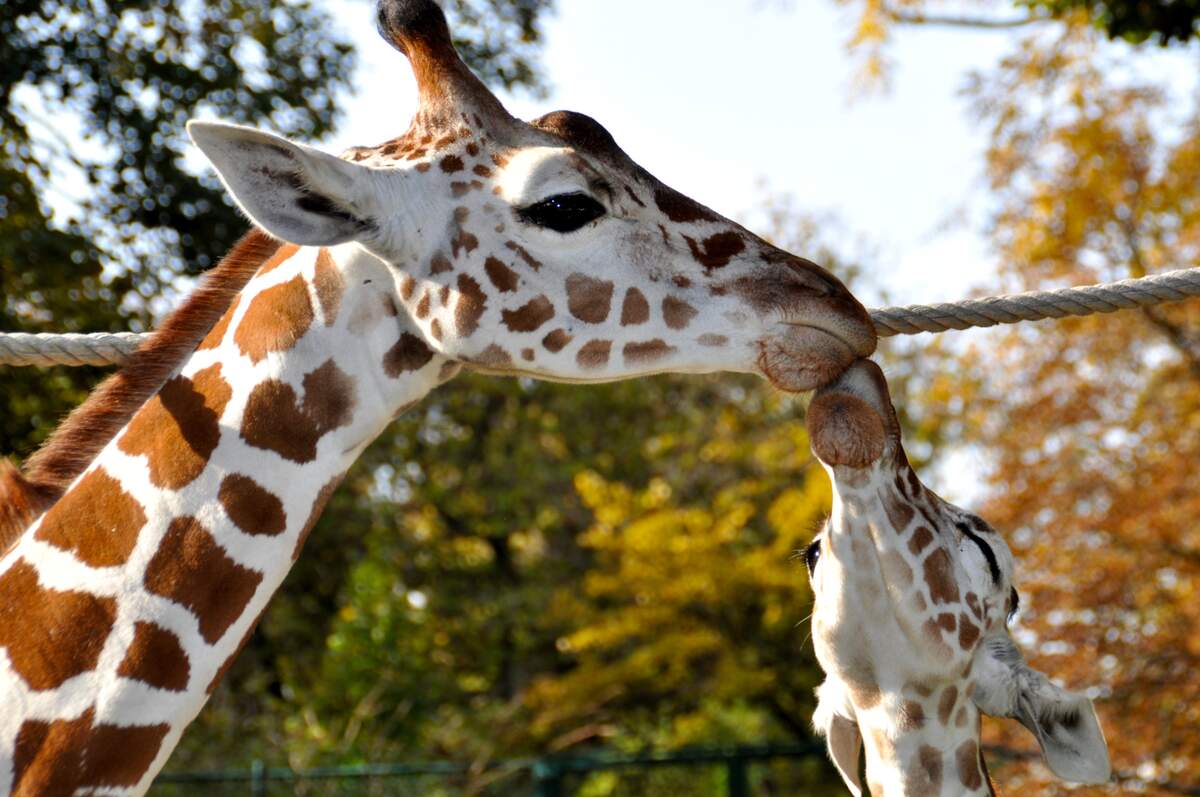

World Giraffe Day
The world's tallest animal is celebrated today, on this longest day or night (depending on the hemisphere) of the year. World Giraffe Day also raises support, creates awareness, and sheds light on the challenges that wild giraffes face. Giraffes encounter a number of threats: habitat loss, habitat fragmentation, habitat degradation, poaching, disease, human population growth, and ramifications from war and civil unrest. They are forced to compete with humans and livestock for resources. As of 2021, there were about 117,000 giraffes in the wild in Africa. People can help save them by participating in the day. World Giraffe Day events are hosted by zoos, schools, governments, non-governmental organizations, institutions, conservation organizations, and companies.
According to the Giraffe Conservation Foundation (GCF), the architects of World Giraffe Day, there are four species of giraffes: Northern giraffe, Southern giraffe, Reticulated giraffe, and Masai giraffe. The GCF recognizes five subspecies: the Angolan giraffe and South African giraffe, which are Southern giraffes, and the Nubian giraffe, Kordofan giraffe, and West African giraffe, which are Northern giraffes. The giraffes live in different geographic areas of Africa. Along with the okapi, giraffes make up the Giraffidae family. At the time of writing, the GCF classification differs from that of the International Union for Conservation of Nature (IUCN), which lists one giraffe species and nine subspecies.
Giraffes have about a fifteen-month gestation period and give birth while standing up. Newborns, called calves, are taller than most humans, weigh about 220 pounds, and can stand and run about an hour after they are born. Giraffes are most susceptible to predators during their first few months of life. Mothers may kick predators away from their calves as well as from themselves. Both sexes are born with horns called ossicones, which at first lay flat so the giraffe isn't injured, but fuse to the skull as the animal grows.
Calves may drink their mother's milk for up to a year, but will also start eating leaves and ruminating at around four months. Adult giraffes mainly subsist on leaves and buds from trees and shrubs. They also eat herbs, vines, climbers, flowers, and fruit. They adapt their diets depending on where they live and what season it is. Most of a giraffe's day—sometimes 75% of it—is spent eating. Since they get moisture from food, they only drink water every couple of days. To do so, they must splay their forelegs, bend their knees, or do both. When they lie down to rest, they fold their legs under their body, although they almost always keep their long necks held up. Besides their height and necks, another distinguishing feature of giraffes is their spots or patches. Coat patterns vary between all giraffes, just like fingerprints do on humans. Giraffes have a lifespan of about 25 years in the wild, but this is longer in captivity. World Giraffe Day helps ensure that giraffes will be able to live long lives to the fullest!
How to Observe World Giraffe Day
Celebrate giraffes, raise support for them, and create awareness about the challenges they face. You could donate to the Giraffe Conservation Foundation, adopt a giraffe, or shop for GCF clothing, which supports giraffe conservation. GCF has suggested taking a picture of yourself standing tall—like a giraffe—with others and posting it on social media with a hashtag such as #StandTallForGiraffe, #StickYourNeckOutForGiraffe, #GiraffeConservationFoundation, or #WorldGiraffeDay, and tagging GCF in the post. If a selfie isn't your style, GCF says that any giraffe-inspired post will do, although, it is also National Selfie Day today. It could include a photo of a cake you baked, a photo of a picture you painted, or anything else you created related to giraffes. Finally, check for World Giraffe Day events taking place near you being hosted by zoos, conservation organizations, and other groups.





















